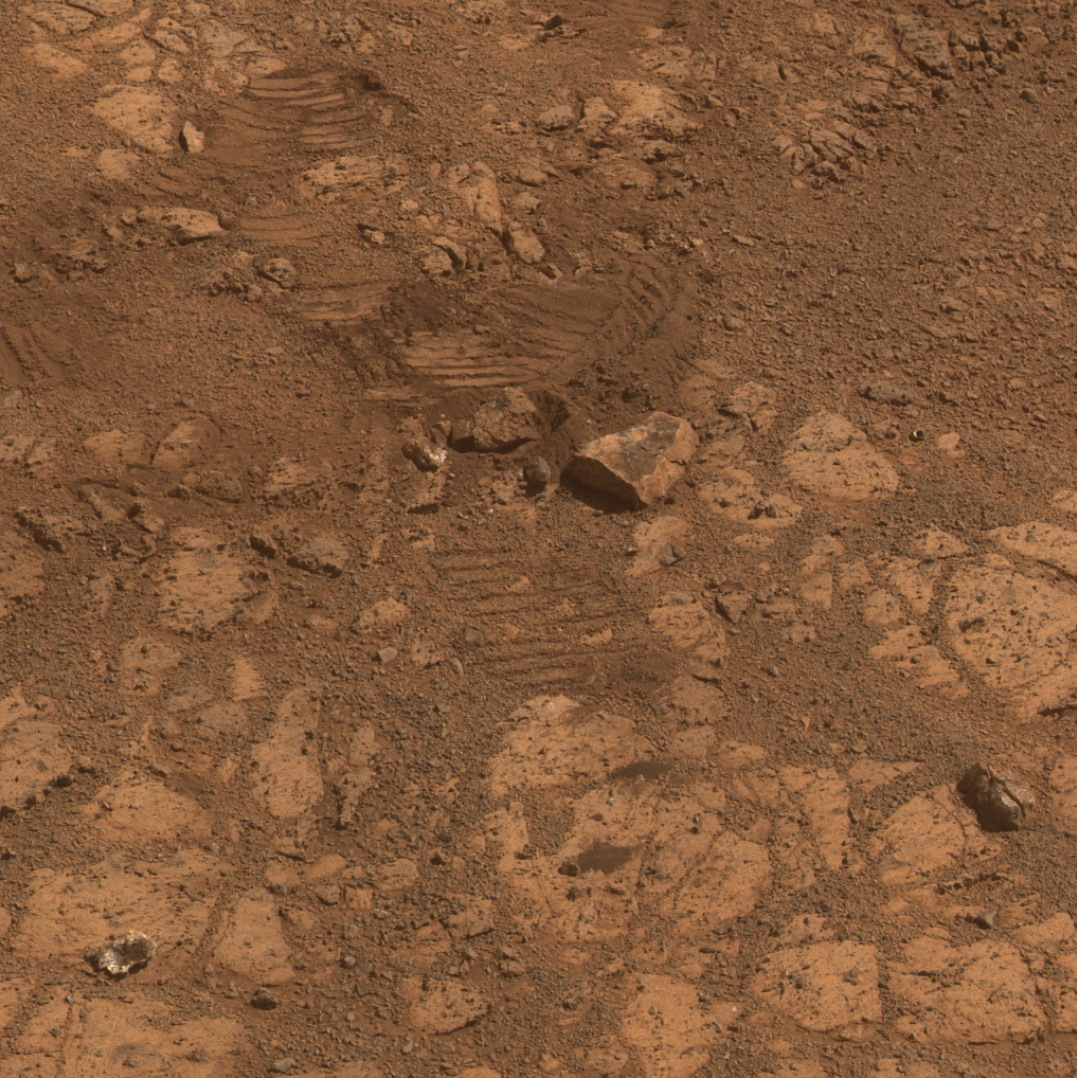NASA's 'Jelly Doughnut' Mars Rock Mystery Solved

Scientists have solved the mystery of the strange "jelly doughnut" rock on Mars.
NASA's Opportunity rover spotted an odd Martian rock that looked like a doughnut on Jan. 8. Four days earlier, however, the rock wasn't there at all. So how did the rock appear? Alien rock throwers? A nearby meteorite impact?
The truth is much less surprising. Scientists working with the intrepid robot have just confirmed that the rock (called Pinnacle Island) was simply kicked up by one of Opportunity's wheels as it made its way across the planet's surface. [Amazing Photos from NASA's Opportunity Mars Rover]
"Once we moved Opportunity a short distance, after inspecting Pinnacle Island, we could see directly uphill an overturned rock that has the same unusual appearance," Opportunity deputy principal investigator Ray Arvidson, of Washington University in St. Louis, said in a statement. "We drove over it. We can see the track. That's where Pinnacle Island came from."
The rock stirred up enough controversy that a concerned citizen even filed a lawsuit against the space agency, claiming that NASA failed to properly investigate a possible fungus growing on the Red Planet.
Although researchers figured out where the rock came from, there are other weird aspects of the Pinnacle Island tale. Using Opportunity's tools, mission scientists have discovered that the rock has very high levels of sulfur and manganese. Both of those elements are water-soluble, suggesting that they were concentrated in the rock due to the "action of water," NASA officials said.
"This may have happened just beneath the surface relatively recently, or it may have happened deeper below ground longer ago and then, by serendipity, erosion stripped away material above it and made it accessible to our wheels," Arvidson said.
Get the Space.com Newsletter
Breaking space news, the latest updates on rocket launches, skywatching events and more!

The rock is located in a spot on "Murray Ridge" along the wall of Endeavour Crater, where Opportunity is spending the Martian winter. Now that the rover is done examining Pinnacle Island, the Opportunity team is planning to drive the rover uphill to check out exposed rock layers on a different part of the Martian surface.
"We are now past the minimum solar-energy point of this Martian winter," Opportunity project manager John Callas, of NASA's Jet Propulsion Laboratory in Pasadena, Calif., said in a statement. "We now can expect to have more energy available each week. What's more, recent winds removed some dust from the rover's solar array. So we have higher performance from the array than the previous two winters."

Opportunity has been exploring Mars since 2004, landing on the Red Planet a few weeks after its twin, Spirit, touched down on the Martian surface. Both rovers were assigned 90-day missions, but Spirit gathered data until 2010 and Opportunity is still roving along.
Follow Miriam Kramer @mirikramer and Google+. Follow us @Spacedotcom, Facebook and Google+. Original article on Space.com.
Join our Space Forums to keep talking space on the latest missions, night sky and more! And if you have a news tip, correction or comment, let us know at: community@space.com.

Miriam Kramer joined Space.com as a Staff Writer in December 2012. Since then, she has floated in weightlessness on a zero-gravity flight, felt the pull of 4-Gs in a trainer aircraft and watched rockets soar into space from Florida and Virginia. She also served as Space.com's lead space entertainment reporter, and enjoys all aspects of space news, astronomy and commercial spaceflight. Miriam has also presented space stories during live interviews with Fox News and other TV and radio outlets. She originally hails from Knoxville, Tennessee where she and her family would take trips to dark spots on the outskirts of town to watch meteor showers every year. She loves to travel and one day hopes to see the northern lights in person. Miriam is currently a space reporter with Axios, writing the Axios Space newsletter. You can follow Miriam on Twitter.









